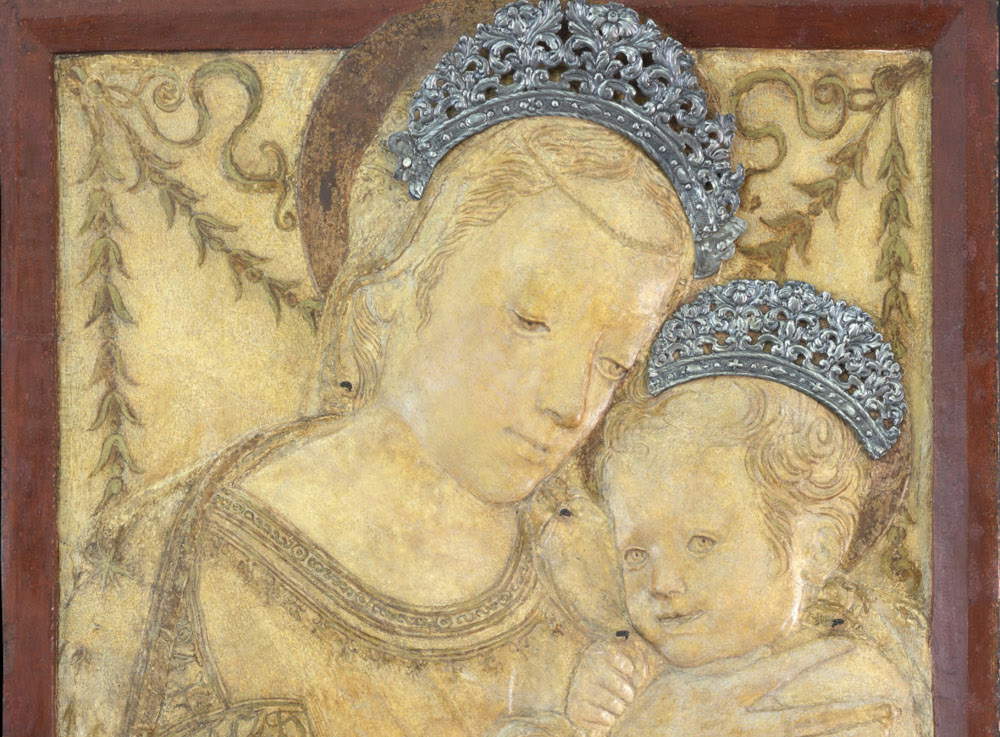Florence, the restored Madonna and Child from the Basilica of San Lorenzo on display at the Opificio delle Pietre Dure
From June 22 to Sept. 6, 2023, the Madonna and Child from the Cloister of the Basilica of San Lorenzo in Florence is on display at the Museum of the Opificio delle Pietre Dure for the Caring for Art. Restorations exhibition. This is the second event in the review promoted by the Opificiodelle Pi etre Dure that aims to acquaint the general public with the work of the eleven restoration sectors of the Florentine Institute, which is constantly engaged in the conservation of the rich artistic heritage of Italy and beyond.
Selected works that have undergone major conservation work at the Opificio delle Pietre Dure will be exhibited periodically at the Opificio Museum, where they can be admired once the work is complete, before returning to their places of origin.
“The Museum, which exhibits extraordinary specimens of the ancient Medici manufacture, thus opens up,” explains Emanuela Daffra, Superintendent of the Opificio, “to the activities that are the heart of the modern Opificio and accompanies visitors by recounting its achievements.”
The Madonna and Child from the Cloister of San Lorenzo will remain on display until September 6, 2023: by visiting the Museum, visitors will support the territories affected by the floods in Emilia Romagna and Marche.
The Madonna and Child from the Cloisters of the Basilica of San Lorenzo in Florence is a 15th- or 16th-century stucco bas-relief, a faithful copy of the Panciatichi Madonna, a delicate marble work by Desiderio da Settignano preserved at the Bargello Museum and, according to Francesco Caglioti, made between 1450 and 1455, when Donatello’s influence on the young sculptor was particularly strong. In fifteenth-century workshops it was customary to draw copies or casts from the masters’ most successful compositions, in different materials and sometimes with small variations. The one now on display at the Museo dell’Opificio delle Pietre Dure is the work of an anonymous artist with a very sensitive hand that has managed to keep intact the extraordinary grace of the original, unfortunately now worn on the surface since it was exhibited in the open air, on the outer wall of the building located between Via de’ Pucci and Via Cavour, until 1920 when it entered the Bargello collections.
The stucco Madonna, which re-proposes in all their delicacy the subtle transitions of planes now partly lost in the original, must have been painted white to simulate marble and was embellished with leaf gilding on the edges of the robe, on the plant festoons in the background and on the hair of the Virgin and Child. Probably as a result of breaking into numerous fragments and subsequent gluing, the work had been repainted with a thick dark layer imitating bronze, which weighed down the modeling and greatly distorted its appearance. Now after cleaning and discreet retouching, even with the alterations it has undergone due to time and the treatments to which it has been subjected, the bas-relief captures with its calm luminosity.
The silver crowns placed on the haloes of the Madonna and Child have also been restored: removed the dark patinas and protected with clear varnish, by means of silver nails they have been reapplied to the work, to tell the story of the devotion the image has been subjected to throughout its history.
For info: http://www.opificiodellepietredure.it
Hours: Monday through Saturday from 8:15 a.m. to 2 p.m.
Admission fee is included in the cost of the Museum entrance ticket (full 5 euros, reduced 3 euros).
Pictured is a detail of the Madonna and Child from the Cloister of the Basilica of San Lorenzo in Florence.
 |
| Florence, the restored Madonna and Child from the Basilica of San Lorenzo on display at the Opificio delle Pietre Dure |
Warning: the translation into English of the original Italian article was created using automatic tools. We undertake to review all articles, but we do not guarantee the total absence of inaccuracies in the translation due to the program. You can find the original by clicking on the ITA button. If you find any mistake,please contact us.



























